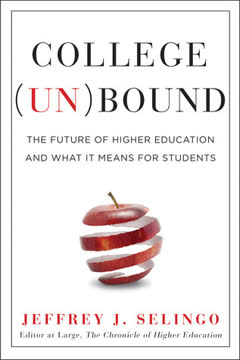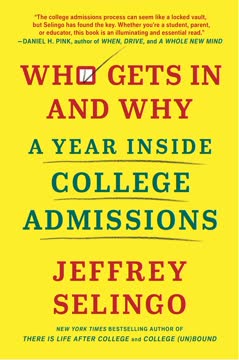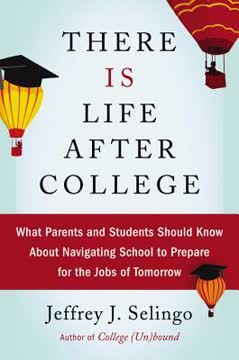Key Takeaways
1. American Higher Education is Broken and Failing Many Students.
Only slightly more than 50 percent of American students who enter college leave with a bachelor’s degree.
Low completion rates. Despite being the envy of the world for decades, American higher education has lost its way. A staggering number of students who start college never finish, a rate lower than most wealthy countries. This failure carries significant economic risks for the nation and individuals.
Declining quality. While elite institutions remain top-tier, the majority of colleges attended by most Americans face spiraling costs and declining quality. The United States now ranks twelfth among developed nations in higher-education attainment by young people, risking a future generation less educated than the last.
Economic necessity. A college degree is increasingly the only ticket to the middle class and upward mobility, especially for students from low-income families. However, the system's high cost and low completion rates mean many are left with debt but no degree, hindering their economic prospects.
2. The Trillion-Dollar Student Debt Crisis Signals a Broken Financial Model.
Overall, student debt has surpassed trillion dollars while, since the late 1970s, the annual costs at four-year colleges have risen three times faster than the rate of inflation.
Unsustainable costs. College tuition has dramatically outpaced inflation for decades, forcing students and families to take on massive debt. This debt burden now exceeds a trillion dollars nationally, impacting graduates' life choices like marriage, homeownership, and starting families.
Lack of transparency. The college financing system is a complex maze, often confusing for families. Colleges frequently prioritize emotional appeals over clear financial realities, making it difficult for students to understand the true cost and potential debt until late in the decision process.
Questionable value. The massive run-up in debt raises questions about whether degrees from some colleges are overvalued, especially when graduates struggle to find jobs that justify the cost. Unlike other assets, a degree's value is hard to measure, and colleges benefit from this market confusion.
3. Colleges Became Risk-Averse Businesses Chasing Prestige and Amenities.
More than ever, American colleges and universities seem to be in every business but education.
Mission creep. Colleges have evolved into big businesses, focusing on revenue, prestige, and amenities rather than their core mission of teaching and research. This "Lost Decade" saw institutions prioritize rankings, build lavish facilities, and treat students as customers to be pleased.
Credential race. Institutions created a proliferation of new majors and graduate programs, often vocational in nature, to attract students and revenue, contributing to "credential creep" where advanced degrees become the new minimum requirement for many jobs, regardless of actual need.
Amenities arms race. Colleges engaged in a costly competition to build luxurious dorms, recreational centers, and dining halls, funded by debt and rising tuition. These facilities, while appealing to students, contribute little to academic learning and add significant financial pressure.
4. Five Disruptive Forces Are Reshaping Higher Education Forever.
At the center of this disruption is a perfect storm of financial, political, demographic, and technological forces.
Financial strain. Many colleges face significant financial weakness due to persistent operating deficits, rising expenses, and flat or falling net tuition revenue. This makes their current fiscal path unsustainable, with a growing number at risk of closure or merger.
State disinvestment. Public colleges, which educate the majority of students, have seen state funding slashed over decades, accelerating after the 2008 financial crisis. This forces them to raise tuition, making education less affordable for residents and pushing them to recruit more out-of-state and international students.
Demographic shifts. The boom in high school graduates has peaked, leading to a decline in the traditional college-age population, particularly in the Northeast and Midwest. This intensifies competition for a shrinking pool of full-paying students.
Unbundled alternatives. New providers are challenging the traditional model by unbundling services like content delivery (online courses) and credentialing (digital badges), offering lower-cost, flexible alternatives.
Value gap. Public anxiety over rising costs and questionable quality has created a value gap, with more Americans questioning if college is worth the money. This pressure forces colleges to prove their worth beyond just providing a degree.
5. Technology and Data Analytics Enable Personalized Learning and Better Matching.
We’re moving from a model where we forced one teaching method on hundreds of students in a class to a model where we can personalize the education of every student on a campus.
Data-driven insights. The explosion of data allows colleges to track student behavior and performance in unprecedented ways. This data can be used to personalize learning experiences, identify struggling students early, and tailor interventions.
Adaptive learning. Technologies like Knewton adapt course content based on a student's progress, allowing them to focus on areas where they need help and move quickly through material they already know. This can improve outcomes, especially in foundational courses.
Improved matching. Data analytics can revolutionize the college admissions process, moving beyond inefficient marketing to better match students with institutions where they are likely to succeed academically and financially. Tools like Naviance and eAdvisor use data to guide students toward appropriate courses and majors.
6. Online Learning and Unbundled Alternatives Challenge the Traditional Model.
The technological revolution in how information is distributed and consumed holds the promise to scale higher education to serve more students and cut costs.
Massive Open Online Courses (MOOCs). Elite universities are offering free online courses to massive global audiences, challenging the idea that high-quality education requires physical presence and high tuition. While revenue models are unclear, MOOCs can expand access and potentially serve as alternative admissions paths.
Hybrid models. Blending online and face-to-face instruction (hybrid courses) is proving effective, allowing students to learn as much as in traditional classes but in less time. This model can increase efficiency and accommodate more students without building new facilities.
New providers. Companies and organizations are offering unbundled educational services, from low-cost online courses for credit (StraighterLine) to skills-based training and digital badges. These alternatives provide flexibility and challenge the traditional college's monopoly on credentialing.
7. Competency, Not Seat Time, Should Be the Measure of Learning.
Degrees should be based on how much students know, not how much time they spend in a classroom.
Challenging the credit hour. The traditional system measures learning based on time spent in a classroom (credit hours), which doesn't guarantee actual knowledge or skill acquisition. This outdated model hinders flexibility and efficiency.
Competency-based education. Institutions like Western Governors University award degrees based on demonstrated mastery of subjects through assessments, allowing students to learn at their own pace and potentially finish faster and cheaper.
Prior learning assessment. Students can gain college credit for knowledge and skills acquired outside the classroom through work experience, military service, or other training. This validates non-traditional learning and accelerates degree completion, particularly for adult learners.
8. The Value of a Degree is Under Scrutiny, Demanding Transparency.
Is a degree from Podunk U worth $50,000 a year?
Questioning ROI. With rising costs and uncertain job markets, students and parents are increasingly questioning the return on investment of a college degree, especially from less selective or expensive institutions. They want quantifiable data on outcomes.
Demand for data. There is a growing demand for transparent data on graduate earnings, employment rates by major and institution, and completion rates for different student populations. States are beginning to create databases to provide this information, despite resistance from some colleges.
Measuring quality. Beyond economic outcomes, there's a need for better ways to measure the quality of the educational experience itself – how much students learn, develop critical thinking skills, and mature as individuals. Current measures like rankings are often flawed and easily gamed.
9. Future Success Depends on Skills and Adaptability, Not Just Majors.
Employers say that future workplaces need degree holders who can come up with novel solutions to problems and better sort through information to filter out the most critical pieces.
Skills gap. Employers report that many college graduates lack essential skills needed in the modern workforce, such as critical thinking, problem-solving, communication, teamwork, and adaptability.
Beyond the major. While some majors directly lead to specific jobs, many employers value the ability to learn how to learn and apply knowledge across different contexts. The specific field of study may be less important than the rigor and depth of engagement within that field.
Developing capabilities. Colleges need to prioritize developing cognitive abilities and "soft skills" through high-impact practices like undergraduate research, study abroad, service learning, and project-based learning. These experiences foster creativity, resilience, and the ability to navigate uncertainty.
10. The Traditional College Model Doesn't Fit Everyone, Alternatives Are Needed.
It seems we send some kids off to college because there is nowhere else to put them.
One-size-fits-all limitations. The traditional four-year residential college model, while valuable for many, is not the best fit for all students, particularly those who are not academically prepared, financially constrained, or unsure of their path.
Need for expanded options. A broader definition of post-high school education is needed, including high-quality vocational training, apprenticeships, structured gap years, and alternative providers that offer flexible, affordable pathways to credentials or skills.
Addressing undermatching. Many qualified students, especially from low-income or first-generation backgrounds, "undermatch" by attending less selective colleges than they could, potentially hindering their chances of graduation and future earnings. Better guidance and financial support are crucial.
11. The Future of Higher Education is Hybrid, Personalized, and Outcome-Focused.
The college of the future will certainly be different than the one of today, but robots will not replace professors in the classroom anytime soon.
Evolution, not extinction. While traditional colleges won't disappear, they must evolve to survive. The future will see a blend of traditional and innovative approaches, driven by student demand for value, flexibility, and relevance.
Key shifts:
- Personalization: Education tailored to individual learning styles and paces using data and technology.
- Hybrid Learning: Blending online and face-to-face instruction to optimize efficiency and engagement.
- Unbundling: Students accessing educational components (courses, credentials, services) from various providers.
- Fluid Timelines: Moving away from rigid semesters and four-year degrees towards flexible start times and completion based on competency.
- Outcome Focus: Greater emphasis on demonstrable skills, job readiness, and long-term value, supported by increased transparency.
Balancing tradition and innovation. The challenge is to integrate new technologies and models while preserving the valuable aspects of the traditional college experience, such as intellectual exploration, personal development, and mentorship, ensuring a high-quality education for a diverse student body.
Last updated:
Review Summary
College (Un)bound examines the challenges facing higher education, including rising costs, declining quality, and poor graduation rates. Selingo analyzes the unsustainable business model of universities and explores potential disruptions like online learning. While some readers found the book insightful and valuable for prospective students and parents, others criticized it for lacking fresh ideas and oversimplifying complex issues. The book offers a comprehensive overview of higher education's problems but receives mixed reviews on its proposed solutions and overall effectiveness.
Similar Books
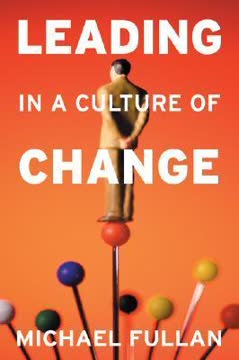
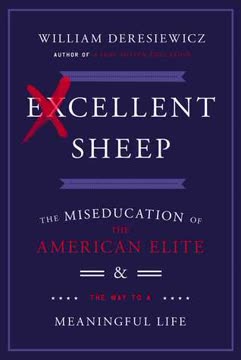
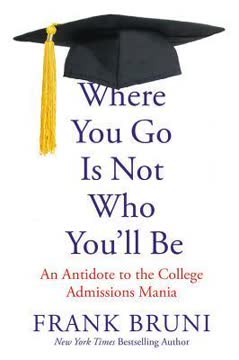
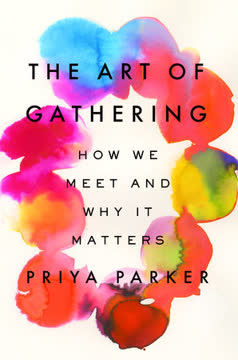


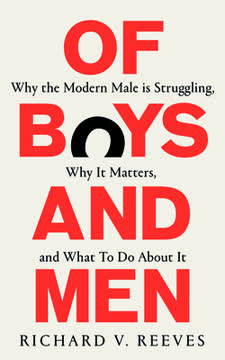
Download PDF
Download EPUB
.epub digital book format is ideal for reading ebooks on phones, tablets, and e-readers.
